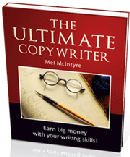Writing For Children and Teens -
Should
You Outline Your Story Before Writing?
by Maurene
Janiece
Part of the writing process is experimenting. Writers differ on
their opinions about outlining--some love it, some hate it, and
some are mixed. The decision to outline is a personal one. You
need to determine what works best for you. Some writers cannot
write without an outline, while others like to jump in and "see
what happens." Some will have the plot up to a certain point,
and then write the ending as it comes, not forcing it to go one
way or the other. In contrast, some writers start from the
ending and work backward to ensure that all the pieces are
there that lead up to the end. (This works particularly well
with mysteries or stories that have some type of surprise
ending.)
Keep in mind that outlines DO tend to change, as do characters
as you write more and get to know them better. Yes, characters
are known for taking on lives of their own. Many people find
that it is best to let the character lead them, as trying to
force a character to do something that is not in his or her
nature simply does not work (and leads to rewriting it all
anyway). Again, it is a personal preference. As you saw with
the character profiles, there are several ways to get to know
your characters.
An outline does not have to be the standard formats you may
remember from school. There are many different ways to visually
plot your story. Many writers use sticky notes, or colored note
cards, as these can be moved around as needed to show plot
progression. Others use spreadsheets with each character or
thread listed down the side, and the plot lines across the top.
I like to use a big roll of butcher paper. I plot the story
across the top, for as long (literally) as it takes on the
paper. I then list the actions underneath each chapter or
primary scene. This is just a larger version of the
spreadsheet. I also use a lot of colored Sharpie pens. And of
course, there's a traditional outline format. If you "Google"
outline, you will find lots of examples.
Remember that writing involves a lot of rewriting, no matter if
you use a detailed outline and notes or if you "wing it."
Keeping this in mind may help you feel more relaxed about
letting things change as they need to so that the story can
evolve as it needs to, while allowing required events to remain
in place so that your ending makes sense when you (and your
readers) arrive.
Back
to Top
Download this article in
PDF
Maurene Janiece is a writer of young adult fiction. She holds
an MFA in Writing for Children and Teens from Vermont College
and has taught creative and composition writing at the high
school and college levels. She offers advice for new writers
and provides manuscript critiques through her website. She has
published several nonfiction books as Maurene J.
Hinds.
Source: EzineArticles.com

© WritersReign.co.uk - Writing for
Children and Teens
| 



![]()






